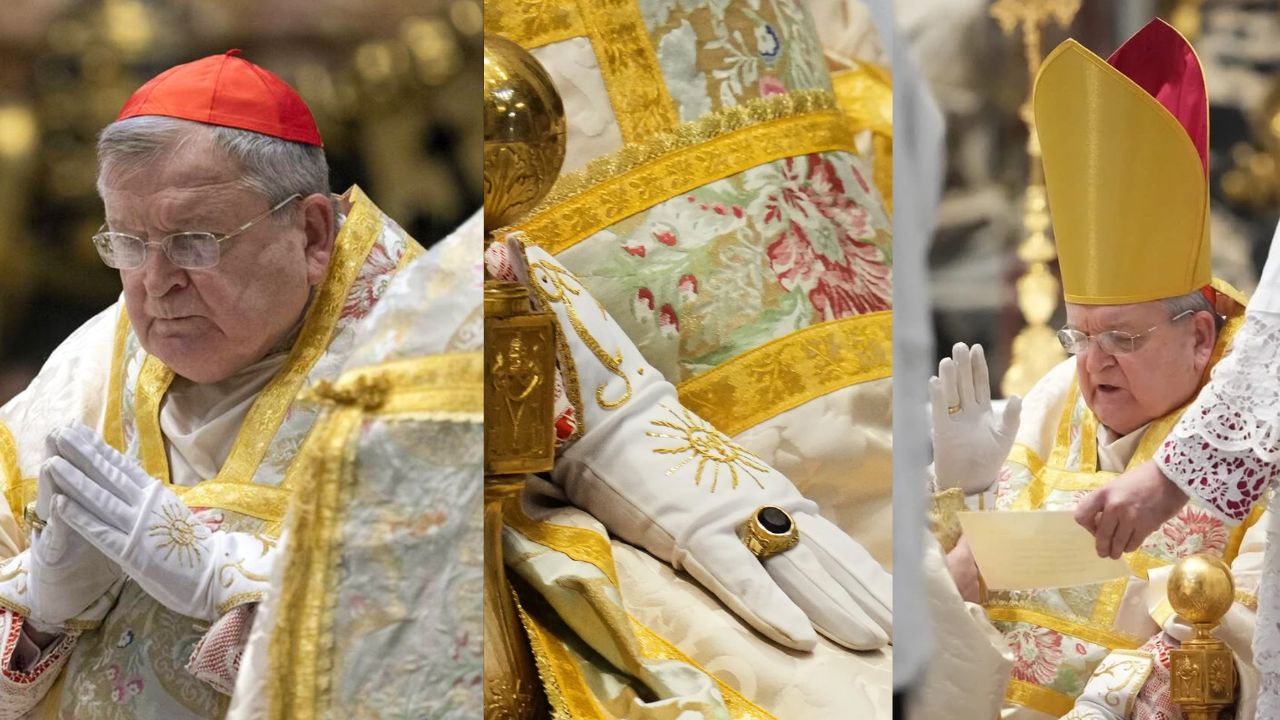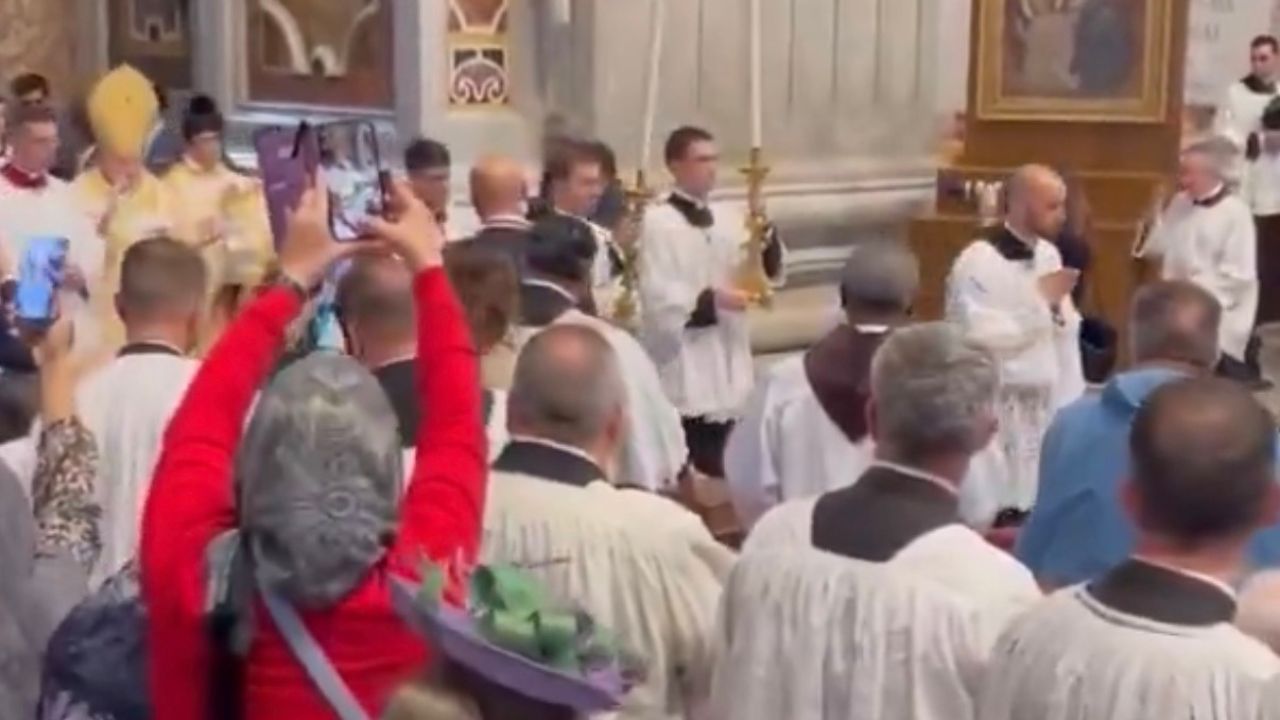In these hours, from the Eternal City to the remotest sacristies of Italy, people are debating about “three-cornered hats, ribbons, and processions.” Some mock, others exalt. Yet few grasp the deeper fractures these outward displays reveal. The Catholic Church holds within herself a rich plurality of rites—not as a source of conflict, but as a spiritual wealth. Some communities live the rite of Paul VI with authenticity; others celebrate the Ambrosian rite; Carthusian monks preserve their own liturgy; and the Eastern Churches maintain distinct rites—each expressing the same faith. The 1962 Missal belongs to this same family of expressions, and it is hard to see why it should be treated otherwise.
Those who attack this rite ideologically become agents of division—and division, in whatever form, is perilous. For what divides cannot be Catholic, nor can it build the communion of the Church. Yet division has apostles on both sides. Increasingly, certain events become ideological stages: people “march” to obtain something, to protest against someone, or to “celebrate” in order to make a point. Beneath the appearance of pilgrimage, one often finds political rhetoric rather than spiritual meaning. While many groups around the world celebrate the 1962 liturgy out of genuine liturgical sensitivity, here the difference lies in the attitude and the intent. On one side are communities who live the ancient liturgy as a path of prayer; on the other, groups who wield it as a banner “against” others, a symbol of identity and polemic. What began as an expression of faith becomes a tool of opposition, breeding a sectarian spirit where the bond is no longer spirituality, but ideological and political affinity. For those who live the Mass and Divine Office in the spirit envisioned by Benedict XVI’s Summorum Pontificum, the liturgy is a place of peace, silence, and prayer. For others, it has become a weapon of contrast, an identity badge used to reject the so-called “Mass of Paul VI” as neither “true” nor “beautiful.”
Those outside their world are swiftly labeled “heretics,” “modernists,” or “outside the true Church.” Many of these same voices fuel division with slander and defamation, often directed at priests and bishops. Since the election of Pope Francis, even the Pope himself has become the target of dissent—a dissent that is less constructive critique than ideological hostility.

What Lies Beneath?
Behind this apparent liturgical coherence lies a psychological and sociological phenomenon that challenges the Church herself. Why do communities that preach moral purity so often reveal deep contradictions? Why do some condemn homosexuality yet live it, judge the divorced yet bear their own wounds, defend “true doctrine” while facing lawsuits or partisan entanglements? And above all, why are so many young people—including gay or remarried Catholics—drawn to a world that seems to reject them?
The Need for Purity as a Reaction to the Loss of Meaning
René Girard, in Violence and the Sacred, teaches that every community arises from fear of the violence within. To prevent chaos, the group channels that violence toward a victim, a scapegoat upon whom guilt and impurity are projected: “Where a thousand particular conflicts had just existed, there is now a single community united in the hatred of one of its members.” — Girard, Violence and the Sacred
In traditionalist communities—and equally in certain modernist lay movements—this dynamic reappears in symbolic form. The “other”—the priest who celebrates differently, the Pope who does not wear the “right” vestments, the bishop who refuses to “dress properly,” the gay man, the layperson who dares to dissent, or the priest celebrating the Novus Ordo (mocked as Novus Horror Missae)—becomes the new scapegoat. Liturgical and moral purity becomes an identity barrier, erected against perceived disorder, relativism, and inner disintegration. The modern world is seen as chaos; the old rite as a redemptive order. Yet, as Girard reminds us, the sacred itself is born from the violence it seeks to suppress.

Technology, Anonymity, and the Desire for Difference
Umberto Galimberti, in Psyche and Techne, describes our age as one dominated by technique, where everything is functional, replaceable, and where “freedom is reduced to the freedom to function.”
“Technology, which acknowledges no limits—neither nature, nor God, nor man—pushes its own threshold infinitely forward, with no purpose other than its own self-empowerment.” — Galimberti, Psyche and Techne
In such an impersonal world, many young people seek a place where life regains symbolic depth. The ancient rite—or in modern sects, the exclusive “community celebration” - offers precisely that: a language removed from the everyday, a slower time, a gesture that serves no function but carries meaning. It promises difference. Latin, incense, silence, distance - all become signs that here, finally, something is sacred.
Yet the paradox, as Galimberti notes, is that this search for freedom becomes a new servitude: “The stimulation of our activity only serves to lower the threshold of our passivity.” Many of these youths—fragile, uncertain, craving belonging—adapt to systems that reassure but control them, liberating them from the world only to bind them to a stricter structure, where every gesture, garment, and word must conform to a pattern.
Repression as a Mirror of Desire
Girard would say that “all mimetic rivalry is rivalry of identity.” Desire denied returns as obsession. This is why sexuality often becomes a battlefield in such settings: the more it is condemned, the more it is feared and projected outward. Many men and women who struggle with unaccepted homosexuality turn to traditionalism as a symbolic way to domesticate it: moral rigor becomes a sublimated form of repressed desire. The enemy is always that which too closely resembles ourselves. Hence the verbal and moral violence toward “the different” is often an inner war, an attempt to preserve cohesion by expelling ambiguity. As Girard writes: “The community is both attracted and repelled by its own origin; ritual appeases and deceives the evil forces because it never ceases to touch them.”
Thus, the rite does not abolish violence—it controls, maintains, and institutionalizes it.

The Allure of Youth: Belonging Against the Void
A familiar refrain echoes: “Here, there are many young people—unlike in ordinary parishes.” Yet a glance at reality dispels the illusion. Filling even a single Roman church for a traditionalist pilgrimage hardly proves a “youthful revival of the Old Rite.” One only has to look at World Youth Days, where thousands of young people from around the globe join in the Mass of Paul VI.
Some might object: “Yes, but those were distracted, on their phones, there for other reasons.” Yet in this so-called “pure” pilgrimage, the scenes were much the same—smartphones held high to film a cardinal’s blessing. The real question, then, is: why are so many young people, including those who marry to please a priest or struggle with their sexuality, drawn to these groups? Perhaps because, in an age where everything is liquid, identities reversible and commitments temporary, these communities offer something that appears absolute. Not possibility, but totality. In a world that demands nothing, everything here is clear: what to think, how to dress, whom to love—and above all, whom to condemn.
Girard would call it the need for differentiation; Galimberti, a reaction to technical neutrality. In truth, both describe the same flight: from emptiness toward an order that promises meaning—even at the cost of freedom. Thus, the ancient rite becomes less a return to God than an aesthetic refuge from insecurity.
The Church Confronting Herself
The traditionalist phenomenon is not an anomaly: it is a mirror. It reflects the fears, wounds, and voids of today’s Church. In its roots, it is not unlike other contemporary currents: those who fight for women’s ordination, or for an undefined synodality. Different words, same logic—the logic of opposition, not communion.
When faith weakens, ideology becomes refuge. When words no longer convince, gestures turn into dogma. And when mercy feels too risky, we retreat into the language of rules. But the Gospel, at its heart, is never a fence—it is an open horizon.
If liturgy, whether ancient or new, or doctrine, synod, or morality, become instruments of division, then it is not the rite that is betrayed, but the sense of the sacred itself. For, as Girard reminds us, “Violence constitutes the true heart and secret soul of the sacred.”
So today, one must ask: Are the communities that call themselves guardians of Tradition truly defending the faith, or merely shielding themselves from the fear of the world—and of themselves?
f.P.V. & f.L.A.
Silere non possum